Directing the Child Actor
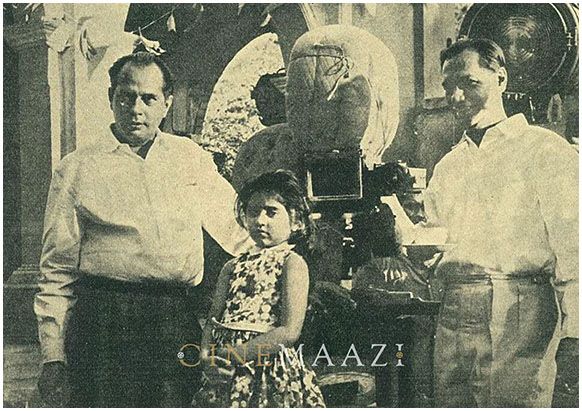
Subscribe to read full article
This section is for paid subscribers only. Our subscription is only $37/- for one full year.
You get unlimited access to all paid section and features on the website with this subscription.
Not ready for a full subscription?
You can access this article for $2, and have it saved to your account for one year.
The very first take of the shot was okayed.
It amazed all present on the set, not because the shot was long and complicated, but because the principal player in the shot was a child-yes, a child of six-and it was also her very first screen role. The child received an ovation.
This happened on the set of "Kabuliwala" (1961),' which I was directing for Bimal Roy, and the child star was Sonu, who plays the role of Minni, the central character of the story.
My mind went back twenty-two years, to the time when I was just embarking on my career as a film director. I was directing "Dwanda,'' my first film. The story has a child character who figures in an incident demanding courage, alertness and spontaneity. In that incident an Alsatian dog attacks a group of children in the park and the youngsters run helter-skelter in fear. No one has the presence of mind to do something to stop the dog, till the little boy rushes in and seizes it by the collar. He is not the least bit afraid.
To shoot this sequence, I impressed upon the young actor that he had to catch hold of the dog in order to save the lives of the other children. I explained to him that the danger involved in grabbing the dog by its collar was as nothing compared to that of the dog's attacking the other children. My impressing him so left not the least bit of consciousness in his mind of the danger to himself and he performed the act without fear or hesitation. The results on the screen were perfect.
My other film "Bhuli Nai," a sensational hit in Bengal, had a role for which I cast a boy of eight. The role was an unusual one.
The boy knew the members of a revolutionary gang and had an ambition to own a revolver and use it. But the adult members of the gang thought he was too young to be taken seriously and the leader of the revolutionaries gave him a toy pistol. The boy cried bitterly.
A time comes when the revolutionary leader is surrounded in a house by the police. The boy is the only person present and, snatching the leader's loaded revolver from him, implores him to escape by way of the terrace while he himself deals with the raiding policemen. His sincerity compels Masterda to listen to him and, in facing the police and holding them at bay, the boy proves that he can handle a revolver as well as anyone else can, though he is killed in the gun-battle.
The boy who played the role turned in a performance that was powerful and moving. That I was able to get the results I wanted, I attribute to the impression I was able to create in his mind. It was his spontaneity which made for a perfect performance.
In my next film, " '42, " I picturised a fire scene with my own son (two and a half years old) acting in it. In this scene the hero, a political worker gone underground, comes forward to rescue his son from their home which has been set on fire by a punitive force of military. My heart quaked with fear. Training and my son's confident acting made the scene authentic.
"Ferry," the film I made when I came to Bombay, had two child roles running parallel to those of the hero and heroine. They were played by Master Babu, music-director Hemant Kumar's five-year-old son, and Baby Bula, my daughter, three-years-old.
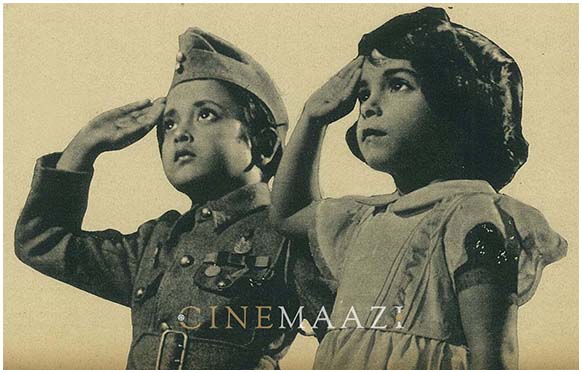
Baby Bula (daughter of Hemen Gupta) in a scene from "Ferry" (1954).
This film gave me great satisfaction, particularly because of the co-operation I received from the children. There were situations in this film when they had to cry bitterly to order or burst into laughter and they did both most effectively.
I also feel that there is more pleasure to be got from working with children because one is more likely to be at home with them than with adults. With children, one can create a natural atmosphere, because of their innocence and serenity. The pleasure and satisfaction are not only one's own as creator, but are also shared by those who enjoy the results on the screen.
The experience I gained from "Ferry" leads me to the conclusion that a child artiste must know on the set only one man-the director.
The director must be hero to the child. The child should worship the director. On the set, the child should look only at one man, hear only one man and try to satisfy only one man. The child artiste must love and esteem the director to the utmost.
It is up to the director to create and make such a position for himself in the eyes of the child actor. He should bring about such a position that the child's aim is only to make him happy. Ungrudgingly the child actor will go on repeating his dialogue lines and action, till he satisfies the director.
The child actor does not have any idea of his own. All the ideas and environments that enable the child actors to work are created by the director arid they only follow his directions. It is up to the director to create an environment; whence flow the feelings among and around them which may make them obey him. Only then is the director successful.
In "Ferry," I was successful in my attempt at such. The two children used readily to shed tears and burst into laughter. What I learnt enlightened me on the handling of child artistes.
It is also the director's duty to discover the mood of his child artiste. Children cannot be bullied against their mood in order to make them work. Mood should prevail as a means to this end. The desired work should never be forced upon the child. The proper mood should be created. Only then is the result good.
In no case should the children's feelings be permitted to become embittered. If the child artistes are in a playful mood, the director must allow them to play and also be their playmate. They must be made to feel that all are playmates and that the acting is all part of a game. The better their mood, the better will their work be.
After "Ferry," there was "Taksaal." Besides my son Jayant and daughter Bula, Daisy Irani played her first role in this picture. She appeared as a boy and, I must admit, her performance was remarkable. I could get from her whatever effect I wanted.
But I was really amazed with the way Sonu worked in "Kabuliwala," and so far I feel this has been my most successful job with child artistes. Sonu is a six-year-old Sindhi girl, acting for the first time in a complex pivotal role. Her main difficulty was speaking Hindi and she had to work with veterans like Balraj Sahni, Usha Kiran an Sajjan. In spite of her difficulties, the performance she gave will be memorable.
With considerable experience behind me the first thing I did was to make myself perfectly at home with Sonu. Sonu learnt to turn to me for everything, to please and satisfy only one person-me, the director. The results lay not far off.
I noticed that, if someone else told Sonu to do anything, she was always put out, even made an experiment. I asked my assistant to coach, her in her dialogue. She could not pick up her lines. A child artistic has got to be dealt with by only one man.
I had always impressed upon Sonu to do everything that was being done was a bit o: play and that we all were playmates. As part of this play and without being conscious of anything else, she was able to go through length complicated shots. Rarely did it require more than one or two re-takes. I can say without reservation that Sonu is a very talented child artiste.
I might add that the child actor should always be coached in dialogue outside the location. There should not be too many spot rehearsals on the set. There should be only one or two rehearsals, and then the take. Rehearsals reduce spontaneity.
Finally, pampering a child artiste is disastrous. It infuses in a delicate, sensitive mind the idea of being someone big and ultimately proves to be a severe handicap in the child's work. It should be avoided.
I do not mean that child artistes should not be praised. Praise should always be there in order to encourage them and to extract still better work from them. But the praise should be within limits and should come from one man only-the director. The more praise they get from him, the keener will they be to react to rig t direction from him.
This article was published in 'Filmfare' magazine’s October 20, 1961 written by Hemen Gupta.
Images and captions appeared are from the original article.
About the Author



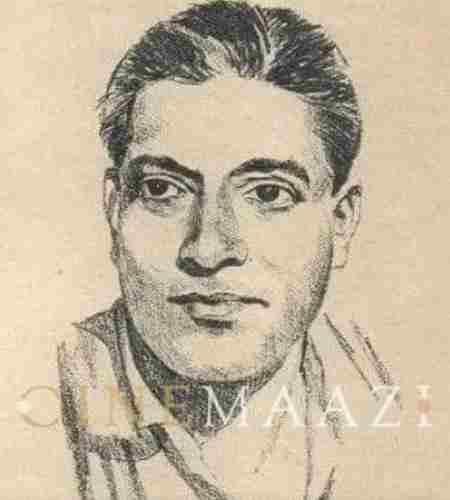
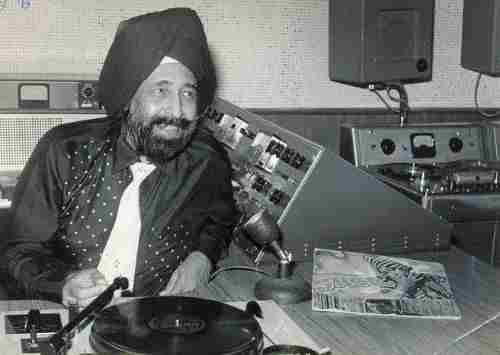
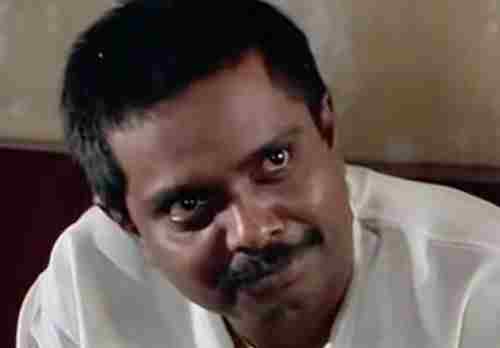
.jpg)


